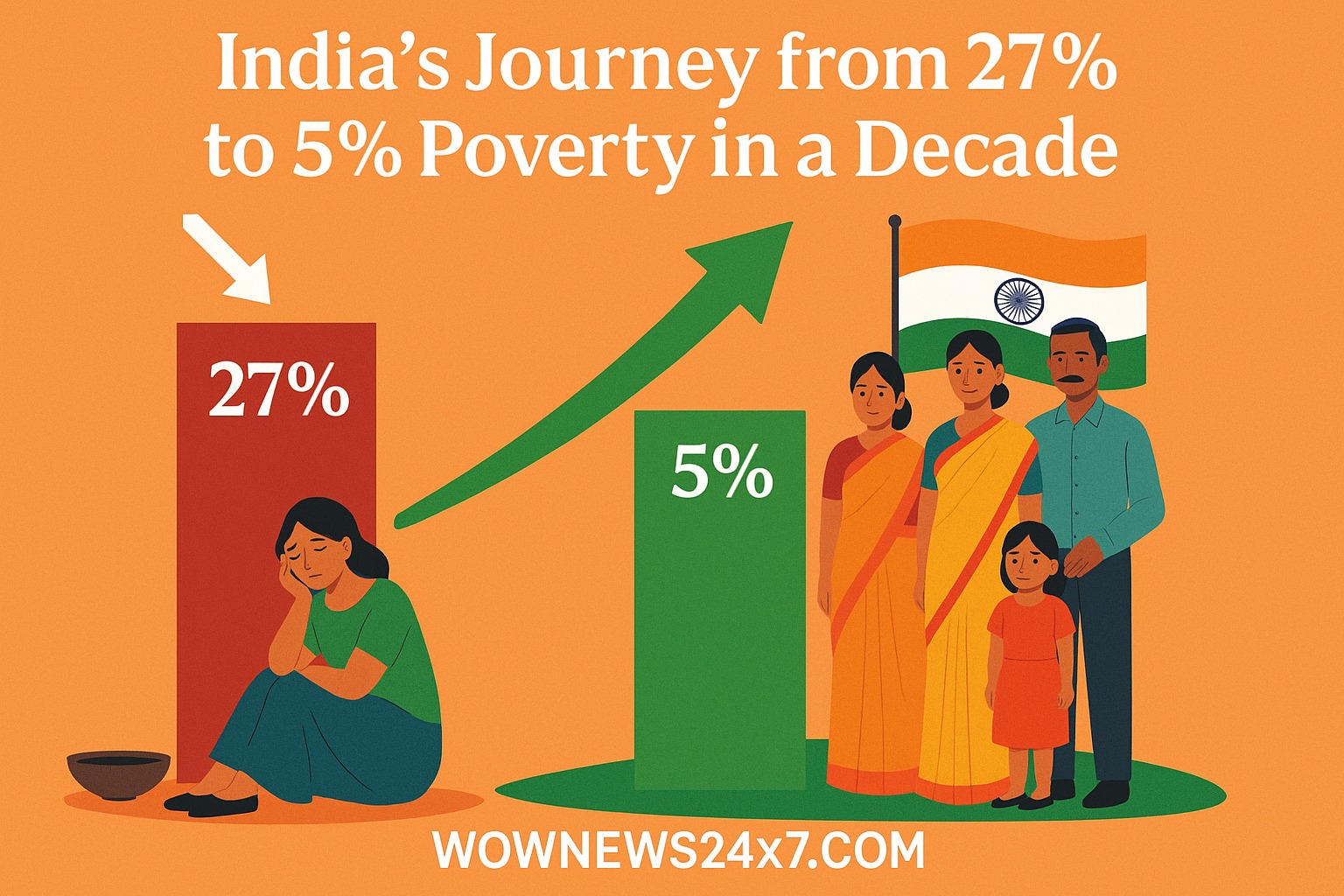India has seen a huge drop in extreme poverty over the last decade, according to a new report from the World Bank. The numbers show that the share of Indians living in extreme poverty fell from 27.1% in 2011-12 to just 5.3% in 2022-23. That’s a difference of nearly 270 million people.
Here are the main points from the report:
The World Bank now defines extreme poverty as living on less than $3 per day, up from the previous $2.15. Even with this higher standard, India’s progress stands out.
Five states—Uttar Pradesh, Maharashtra, Bihar, West Bengal, and Madhya Pradesh—had the largest numbers of people in poverty back in 2011-12. These states also saw the biggest improvements.
Rural poverty dropped from 18.4% to 2.8% in the last decade. In cities, the rate fell from 10.7% to 1.1%.
Government food programs, like free and subsidized grain, played a big role in helping families, especially in rural areas.
The World Bank also highlighted improvements in other areas, such as health, education, and living standards. India’s Multidimensional Poverty Index, which looks at more than just income, fell from 53.8% in 2005-06 to 15.5% in 2022-23.
This is a major shift for the country. It shows that focused efforts on welfare and development can make a real difference in people’s lives.
Source: NDTV, India TV News, Times of India, Firstpost, Economic Times
Advertisement
Advertisement




